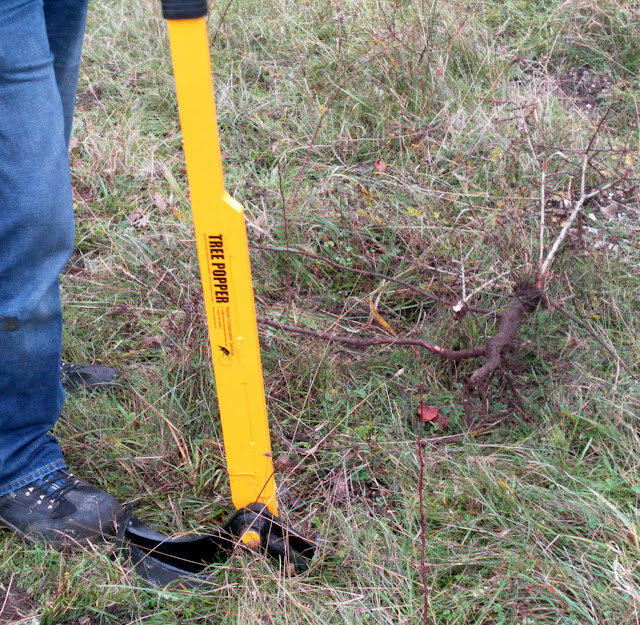By C
It is an
autumnal phenomenon we have seen before, but one not yet fully explained. Why should there be a fall in the number of
women volunteers at WGG in the couple of months leading up to Christmas?
Over the
weekend, numbers replying to say YES to the invitation to the session were slow
to pick up, even though it was for one of our favourite places: the Aston
Rowant National Nature Reserve. I was
beginning to wonder if this week we would be:
The Finest Five, orThe Scintillating Six?
The Amazing Eight …
In the end,
there were seven of us, gathered under a grey sky. Still, it was remarkably mild for the time of
year. And better than it had been the
day before (Mon 14 November) – which was when there was supposed to have been a
‘supermoon’, aka perigee-syzygy of the Earth-moon-sun system. Not just any
old supermoon, but the biggest and brightest and best in 70 years, the like of
which will not be seen again until 25 November 2034.
The
supermoon will have been there, of course.
Just not visible from South Oxfordshire, for the celestial scenery had
been successively changed from ‘partly cloudy’ to plain ‘cloudy’, then to ‘overcast’. The best view of the almost-supermoon (a
‘hunter’s moon’, it being November) was Sunday evening. The sky was almost clear then, except for periods when
the wispiest of cloud led to one of those interesting optical phenomena:
 |
| Not-quite- supermoon (you can tell my camera is hand held!) |
 |
| Very-nearly-supermoon with aureole |
I think that
is what is known as a corona: caused by diffraction of light by tiny water
droplets/ice crystals suspended high in the air. The difference in colouration of the aureole
(ice-blue shading over to orangey brown) might be due to the different
wavelengths of light – like in a rainbow, where light in the visible spectrum
is refracted from violet/blue on the inside to red on the outside?
Anyway,
today – Tuesday – the weather was behaving in an un-Green-Gym like
manner:
The task,
however, was classic Green-Gym-on-Chilterns-chalk-grassland: cutting back
invasive scrub, to try and maintain/extend the grass and wildflower coverage;
and burning. With the added bonus this week
of meeting one of the Senior Reserve Managers, and getting to trial a new piece
of kit. This is a ‘Tree Popper’, which
has come all the way from South Africa:
It may sound
like one of those (now illegal) ‘legal highs’.
But actually it is like a heavy-duty staple remover – for pulling out
small trees.
“It works!”
was the delighted reaction of one of the first to try out the new piece of kit. Further trial and error revealed that it
works best on saplings rather than “multi-stems”. When it came to the regrowth of older trees,
which had been cut back last season (by us), there was still plenty of scope
for brute force and ignorance to finish the job:
 |
| “Proof that SRMs do occasionally get out and work on-site!” |
Tackling the
brambles, on the other hand, was a task for handtools + determination. That was a return to familiar routines of attacking
with a pair of shears …
or slasher
(note the juniper berries in the foreground) ...
carrying away
the cut stuff with a fork …
and not killing the flame:
Thus for
large portions of the morning it was a question of either kneeling, or testing
the back:
Which meant
that tea-break – with a shiny landrover bonnet for use as a serving-table – was
extra specially welcome. Provisions
included cake and ‘pumpkins’:
Conserving
chalk-grassland habitat is one of those never-ending tasks. But good exercise, and it got us outside on a
dull day when it would have been very easy to moulder indoors – and we rather
enjoyed being tree-popper guinea-pigs.








No comments:
Post a Comment